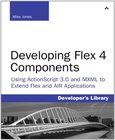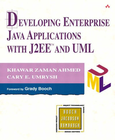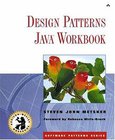Addison Wesley eBooks Page 83
Download free Addison Wesley eBooks Page 83
Developing Scalable Series 40 Applications
A Guide for Java Developers
"I have had the good fortune to be involved with mobile Java from the very beginning, and I know what it takes to be successful in this marketplace. This book will help you be successful with mobile Java application design and development. If you take the information inside and sprinkle it with some imaginative application ideas, you will have a winning combination." Jon Bostrom, Senior Director, CTO Java Technology Platforms, NokiaThe First Official End-To-End Solutions Guide for Every Nokia Series 40 DeveloperNokia's Series 40 Developer Platform gives Java developers access to the world's highest-volume, fastest-growing, and most exciting mobile markets. Nokia sells close to 100 million units within their Developer Platform families every...
Developing Flex 4 Components
Using ActionScript & MXML to Extend Flex and AIR Applications
The first book to completely demystify leading-edge component development with the Adobe Flex 3 platform - How to build components for Flex and AIR applications using ActionScript 3.0 and Adobe's powerful MXML user interface markup language - Covers expert techniques most books ignore, including component metadata, error handling, documentation, and creating Flex components in Flash using the Flex Component Kit - By Mike Jones, world-renowned Flex development consultant and speaker Summary Adobe Flex 3 offers a powerful new framework that web developers can use to quickly produce richer, more immersive, higher-value solutions. To help developers build the most powerful next-generation web applications, Adobe structured the Flex framework around compo...
Developing Enterprise Java Applications with J2EE and UML
The Java 2 Platform Enterprise Edition (J2EE TM) offers great promise for dramatically improving the way that enterprise applications are built, and organizations that have adopted the J2EE are gaining a competitive advantage. The industry-standard Unified Modeling Language (UML) has helped countless organizations achieve software success through visual modeling. Together, the UML and J2EE form a powerful set of tools, but the intricacies involved with using them in tandem are considerable. While UML is highly effective for specifying, designing, constructing, visualizing, and documenting software systems, J2EE offers enterprise developers a simplified, component-based approach to application development. However, when using the two technologies to...
Designing Components with the C++ STL
A New Approach to Programming
'This book is the most accurate and up-to-date source of information on the STL currently available. ! It has an approach and appeal of its own: it explains techniques for building data structures and algorithms on top of the STL, and in this way appreciates the STL for what it is -- a framework.' - Angelika Langer, Independent Consultant and C++ Report Columnist "A superbly authored treatment of the STL...an excellent book which belongs in any serious C++ developer's library." - Jim Armstrong, President 2112 F/X, Texas. The C++ Standard Template Library (STL) represents a breakthrough in C++ programming techniques. With it, software developers can achieve vast improvements in the reliability of their software, and increase their own produc...
Design Patterns Java Workbook
This new workbook complements the classic Design Patterns, giving Java developers hands-on experience in transforming pattern concepts into working designs and code. Steven John Metsker presents nearly 90 practical pattern exercises, encompassing all 23 patterns first introduced in Design Patterns, and others that have since been identified. Metsker organizes Java design patterns by five categories of "intent": interfaces, responsibility, construction, operations, and extensions. Each section of the book focuses on one category, identifying the relevant challenges facing Java developers, and showing how specific patterns can be used to solve problems that recur in Java development and cannot easily be solved without their use. A Solutions c...
2007 - 2017 © eBooks-IT.org





